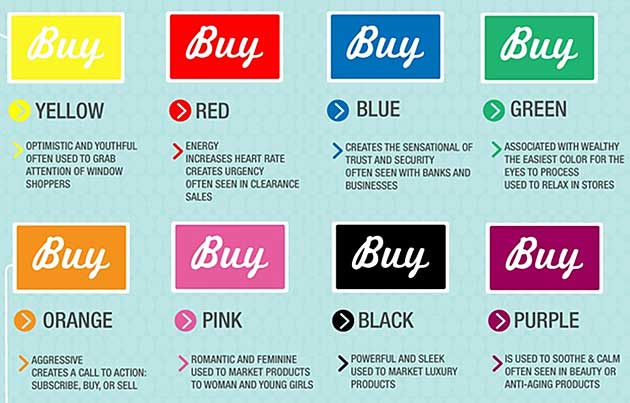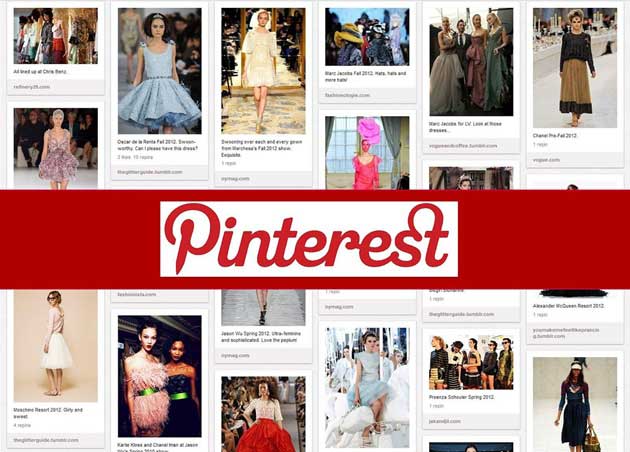Learn why Facebook's blue and how eBay plans to data-woo advertisers. Get the scoop on paid YouTube subscriptions, a better way to manage B2B expenses, and how Yahoo plans to strong-arm the irony crowd with a winning content deal. Speaking of which, finish up with a children's story about what should be at the heart of your content strategy. Skim for happily ever after!
One-man bandstand. Two weeks ago, Daft Punk's latest single, "Get Lucky," featuring Pharrell Williams, exploded on the internet. For good reason: it's mighty catchy. But since then, appropriations and covers have proliferated in our newsfeeds like a head-bopping zombie contagion. One George Barnett's grabbed the lion's share of attention with his one-man rendition of the song, including vocals and instruments. As of this writing, it's nearly 1.3 million views strong. But if you're looking for something more mellow, there's always this Danish guy "getting lucky" on a flute.
Watch for... paid YouTube subscriptions. In the next few days, Google will roll out its first batch of paid YouTube subscriptions for premium channel partners. Subs may cost $2 per month per channel. The subscriptions would provide a fresh source of revenue for Google, and provide incentive to premium partners to produce higher-quality Web content.
Why so blue, Facebook? It's commonly said that the reason Facebook is blue is that Mark Zuckerberg is red-green colorblind. But Leo Widrich dives into the science of color: how easy brands are to recognize by color alone, and how certain colors make us feel. Blue produces a sensation of trust and security and is highly favored by men and women (which also explains why good salesmen always keep a blue suit handy). Bonus: find out why luxury brands dig black!

Good-bye, expense report. Based on the knowledge that 70% of B2B online transactions involve 2+ decision-makers, the soon-to-launch Apruve makes corporate expenses less headache-y. The system lets you assign a corporate card to multiple employees or freelancers, tracks expenses, and lets you limit where purchases are made—dissolving the hassle of receipt-saving and complicated expense reports, and the danger of emailing your card number to a bunch of different people. (For freelancers who have to track professional purchases on different cards, and who hate preparing expense reports as much as clients hate reading them, try Expensify.)
Selling out to cash in. Remember eBay? Of course you do... vaguely. The auction-based e-shopping site plans to share user data with brands so they can better target consumers on non-eBay sites. To do this, eBay's grouped people into shopper segments, such as those interested in auto, clothing, music, or books. The question is, Will advertisers be as attracted to a bargain-hunting site as they are by a full-priced retailer like Amazon, which now offers the same robust audience-targeting ad options?
Inside MasterCard's conversation suite. Sometimes the best way to disperse social throughout an enterprise is by centralizing it. Here's an inside look into MasterCard's "conversation suite," sporting global teams dedicated exclusively to brand-listening. Efforts are bearing fruit: A study of 85,000 mobile payment conversations found that early adopters are frustrated about acceptance at POS and lack of customer support, while nonadopters are more concerned about security and too many options. As a result, MasterCard created the MasterPass digital wallet. Company heads are also vaunting the collaborative attitude trickling down from "conversation suite" integration.

Strategize like a newsroom. Journalistics provides a compelling case for taking a "newsroom" approach to content marketing—much like MasterCard's done with its conversation suite. Advice includes following trending news and memes to create brand-leveraging opportunities, building a content hub for your brand, and finding ways to quantify the return on each content object.
Steal the (angry) bacon. Using examples and counterexamples from major brands, the Harvard Business Review explains how to target customers who've been alienated by competitors—a tactic that can be especially useful in social media, where quick response to group sentiments can garner (or garnish) serious brand brownie points. Advice includes following sidebar conversations, keeping an eye on hyperboles, and—of course—being empathetic.
The concierge is in. Analytics group Synthesio provides six ways to create a first-class social media strategy for travel. Considering that travel is mainly about hospitality, you'll find tips to glean even if you're not running a bed-and-breakfast in Bali. Tips (complete with examples) include becoming a community concierge, encouraging travelers to share stories and "check in," and giving people a sense of what they're missing.
One example used is Tourism Queensland's 2009 "Best Job in the World" campaign, which offered one lucky person the chance to explore Hamilton Island for six months while blogging about it (for a paycheck!). The campaign generated over 610 hours of user-generated content and put the lesser-known destination on the forefront of users' minds. It also won three Cannes Lions Grands Prix:
15 retail stats worth Pinning for. Digiday's compiled 15 stats retailers should know about Pinterest. A taste: as of February, Pinterest had 25 million users. In fashion and retail, 18% of content engagement is driven by brands, versus 82% by community. And the best time for retail and fashion marketers to Pin is 3 PM ET on Fridays.

Image via Collegegloss.
Yahoo: your home for Saturday Night laughs? Starting September 1, all SNL archives (from 1975 to today) will be available exclusively on Yahoo, including comedy scenes, musical performances, behind-the-scenes and dress rehearsal clips, and teasers for the season to come. All archived content will be removed from other video platforms (broken videos galore will plague the Web!) and will be available exclusively from Yahoo's dedicated hub for a year. Well... that's one way to win an audience.
Lady Gaga: the role model you never had. A 2011 Forrester Research and Heidrick & Struggles study found that CMOs' No. 1 objective was "acquiring new customers" (59% of respondents), with only 30% of respondents listing customer retention as a top priority. This imbalance of priorities can lure companies into pursuing what's shiny and new, instead of rewarding the loyalty of people who already love you... and building from there. Jackie Huba explains how Lady Gaga built long-term, sustainable brand loyalty by focusing on her 1% of super-engaged fans. Hey, sometimes prioritizing the one-percenters pays off.

Wrap up with Mash+Studio's children's story for grown-ups, "Jenny and the Chicken." This charming little content marketing parable explains, in plain terms, why you should get to know your customer before trying to be her best friend (hint: learn what she likes and put that at the heart of your content strategy). If this inspires a few epic GIFs and Tumblrs, we're all for it.




